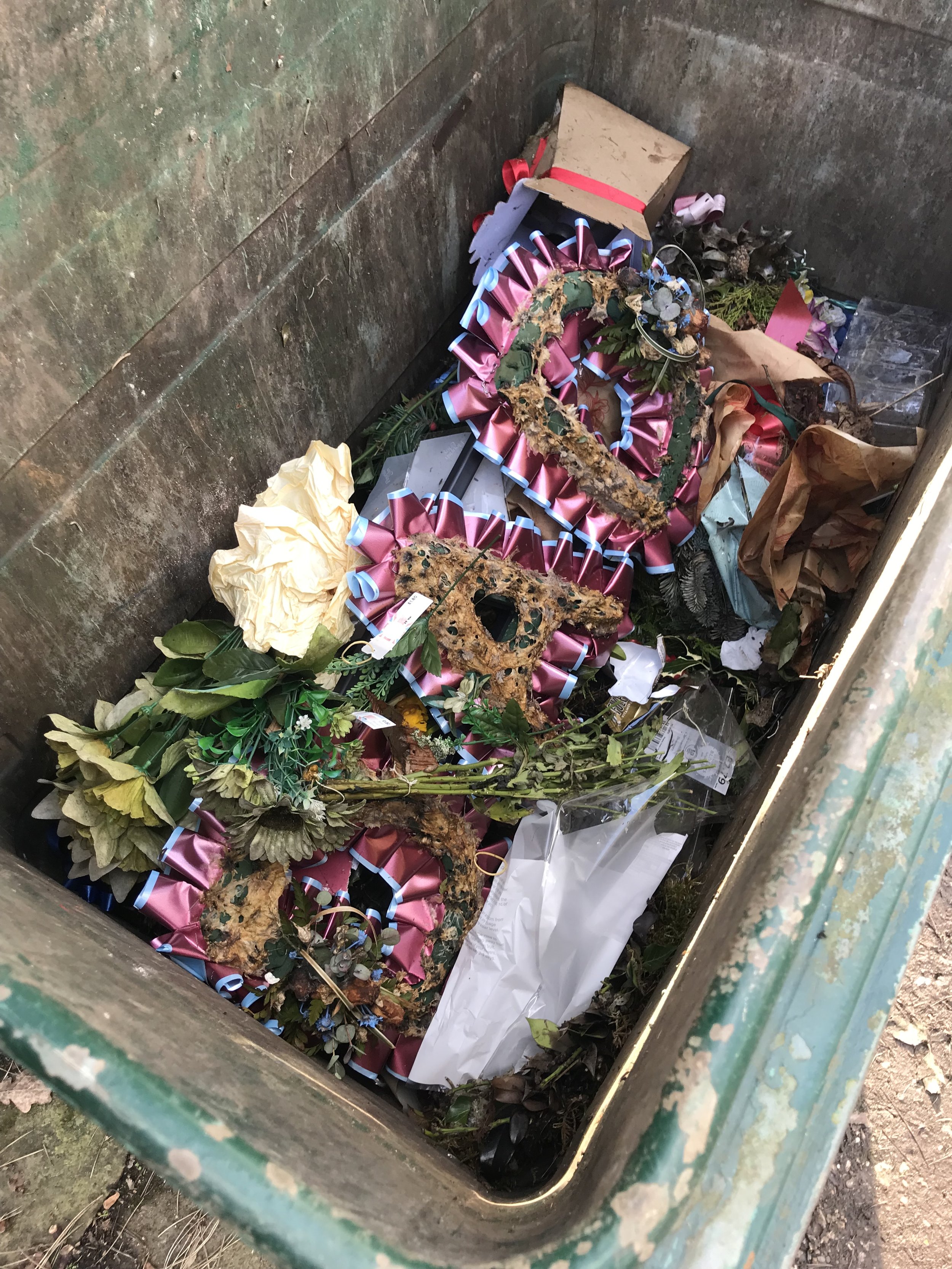The plastic problem in funeral flowers
Floral foam use
Plastic-derived floral foam has been the mainstay of funeral floristry since it was invented in the 1950s. It sits at the heart of most of the letters, shapes and 3D tributes which you may see travelling by in hearses, massed in the viewing areas of crematoriums, or laid on graves in all parts of the UK.
So what’s the problem?
It’s estimated that every year, over 14,670 cubic metres of floral foam and single use plastic are sent to landfill just from crematoriums across the UK. That’s the equivalent of 6 Olympic swimming pools.
Plastic-derived floral foam doesn’t disappear into nothing but remains in landfill and in watercourses as micro-plastics and hangs around for much longer than we will.
How does it get into watercourses? The answer lies in where water goes when it’s poured down the sink after soaking a foam block or shape. All those tiny particles of green flotsam and jetsam may disappear from view, but they don’t disappear from the environment.
But the plastic problem in funeral flowers is not just about foam. It’s about of the hard plastic containers that support it; its about the miles of plastic ribbon whose pleats trim arrangements; it’s about the plastic tape that’s used to secure foam and flowers in place; it’s about the acres of cellophane tied to lamp posts across the country and placed on graves across the UK daily. We need to start changing our unthinking approach to plastic, and we need to start by taking our own first steps towards reducing the plastic waste burden for future generations.
Let’s change the world of funeral flowers, one arrangement at a time.


